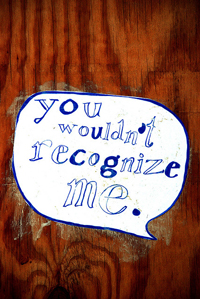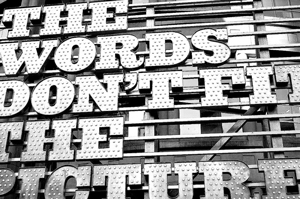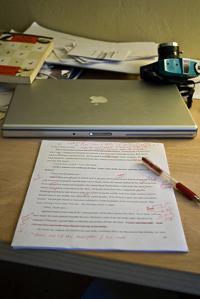
Source: Compare and contrast . . . ., Ruth Flickr, Flickr
We compare things in writing to help a reader visualize and to make an abstract idea more concrete.
When a comparison is made between one thing or quality and another thing or quality, we call it a simile. “The sailor stood like a palace guard” is a simile. However, when situations or relationships are compared, we call the comparison an analogy. “The sailor’s relationship to a boat is like a jockey’s relationship to a horse” is an analogy.

Source: José, Jose Kevo, Wikimedia
You have probably come across analogies on standardized tests. A test might ask you to complete an analogy such as this one:
Sailor is to boat as jockey is to—
- automobile.
- horse.
- kitten.
- spaceship.
When you use analogies in your writing, you usually say that one situation is like another to describe how the situation felt or what the situation meant.
For instance, you might describe an experience in a community where everyone spoke a language different from yours in this way: “It was like being in a dream where I knew what I wanted to say, but where nothing came out when I opened my mouth.”
You would not literally be saying that you were unable to make any sounds with your vocal cords, but that the situation felt as frustrating as a dream in which that might happen. You would be using the analogy to describe the feeling of an experience.
Recognizing Analogies

Source: Oh, But I Would!, boeke, Flickr
See if you can identify the phrases in the following passages that are analogies. In this case you will be looking for the second half of the analogy, the part that introduces the similar situation. For each sentence, click on the phrase that could form the second half of an analogy.
When I go out to eat with my friends, it’s like being with my family.
Sometimes, when it comes time to pay, we end up looking like a table of income tax accountants.
When you ask waiters for separate checks, it’s like asking them to drive you to the airport.
When you can just split the check and not worry about it, it suddenly feels like sunlight has come through the clouds.
Which analogy fits best?

Source: Had to be done, mag3737, Flickr
Analogies not only carry denotative meaning but also connotative meaning. If you want to describe the surprise you get from opening a gift and finding exactly what you wanted, you would not use the following analogy to express it:
Opening the gift was as exciting as being caught in a thunderstorm in a small boat in the middle of a lake.
Both opening the gift and getting caught in the storm might be exciting, but one is a happy excitement and the other is full of anxiety. Since the feeling of the situations is different, this is not a good analogy. A better choice would be the following:
Opening the gift is as exciting as getting ready for school in the morning and suddenly realizing that it is Saturday.
Maybe even better analogies are possible. It depends on exactly what type of excitement you want to create in your reader. Maybe you have in mind an excitement that fulfills a hope or an excitement about receiving much more than you anticipated. The value of analogies is exactly this: you can fine-tune your descriptions to convey just the meaning that you have in mind. The perfect analogy added to your writing is like a diamond set in a piece of jewelry.
See if you can sort out the following analogy parts so that the completed analogies make sense both denotatively and connotatively.

Revision time

Source: this is what revisions look like, greg turner, Flickr
 Now try to revise some analogies. Using your notes, revise the following sentences by using an analogy for each. You’ll have to think up the analogies on your own. Be creative, but also be accurate. When you are finished, check your understanding to see possible revisions.
Now try to revise some analogies. Using your notes, revise the following sentences by using an analogy for each. You’ll have to think up the analogies on your own. Be creative, but also be accurate. When you are finished, check your understanding to see possible revisions.
- Working on algebra homework when I’m tired is really hard.
- Having a kitten fall asleep in your lap is very relaxing.
- Getting students to stop using cell phones would be difficult.
- Getting a cold drink of water after a five-mile run on a hot day is wonderful.
- Working on algebra homework when I’m tired is like walking through knee-deep mud.
- Having a kitten fall asleep in your lap is like having a comforting dream when you’re wide awake.
- Getting students to stop using cell phones would be like trying to get dogs to quit wagging their tails.
- Getting a cold drink of water after a five-mile run is like opening a window in a stuffy room.
Notice how different the first sentence is after an analogy has been added (in your response or the sample response). Before, it ended with “really hard.” The sentence is clear but completely forgettable. After the revision, the sentence has power and life.
Analogies can help you describe experiences or situations more precisely. They add depth to your writing and can relate abstract ideas to concrete images. They can also bring your writing alive in a reader’s mind.